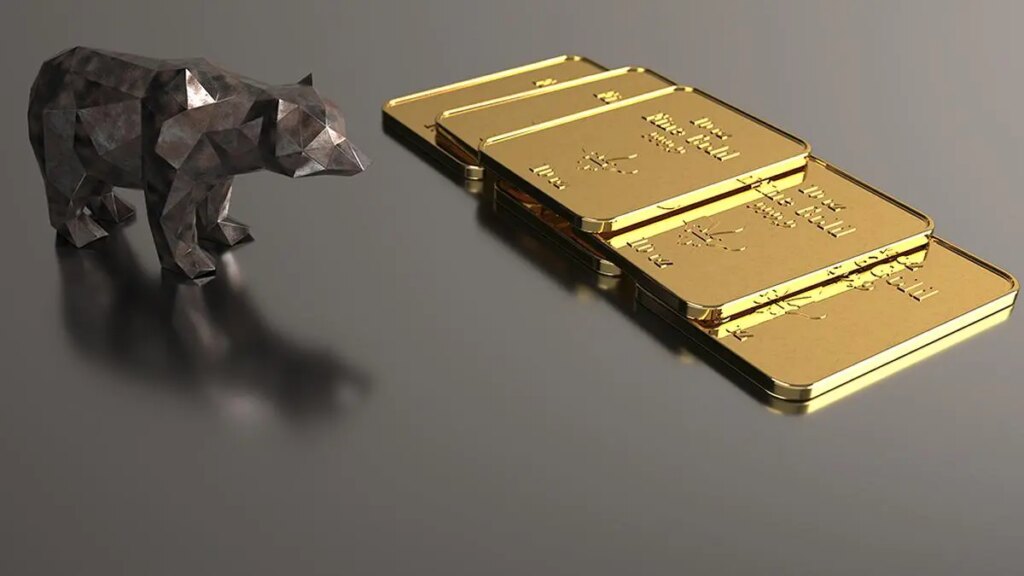A World Gold Council (WGC) expert has said that if historical perspectives were put in today’s context gold could face short-to-medium term pressure.
“…going by past downturns in gold, some events may slow the rally in gold witnessed over the past few years, while others could fuel a prolonged decline,” said Ray Jia, Research Head, China, WGC, in an analysis, “What’s a bear case for gold?”
The decline is likely if the geopolitical or trade risks ease, the dollar strengthens, or the momentum in gold investment demand via central bank purchases, ETF buying and retail demand weakens.
“…a sustained drop in gold would require a major structural change,” he said. This is unlikely, but three scenarios could push gold into a “longer-term downturn”, he said.
3 scenarios
The three scenarios are: the drying up of central banks’ demand, intense competition from other assets, waning consumer affection for the yellow metal and a significant rise in gold supply, said Jia.
“And the likelihood of the above-mentioned factors which may drive gold into bear runs is low,” the WGC China research head said, adding that all markets rise and fall, and “gold’s recent ease in momentum has made some investors wary.”
Currently, global government debt is ballooning, especially in the US, and competition among major powers may continue to spark risks – economic or geopolitical. “Against this backdrop, we believe that gold’s role as a strategic asset that diversifies portfolio risk and improves performance will continue to shine,” he said.
68 new highs
Jia said gold has experienced a prolonged bull run in recent years. “After bottoming at $1,429/oz on November 3, 2022, the gold price has more than doubled as of June 30, 2025 — it stood at $3,287/oz, having refreshed its historical record 68 times over that period.”
Such impressive strength was mainly driven by consistent central bank purchases as well as soaring geopolitical and, more recently, trade risks. However, since the start of the second quarter this year, gold’s bullish momentum has softened.
“During the entire second quarter, gold rose by 5.5 per cent. While this represents decent growth by any measure, it’s well below Q1’s 19 per cent surge,” the WGC expert said.
On Friday, gold prices rose more than 1 per cent as investors sought haven assets following US President Donald Trump’s announcement of new tariffs. Spot gold ended at $3,356.93 per ounce. US gold futures closed higher 1.4 per cent at $3,371.20.
In India’s Mumbai market, gold (999 fineness) was quoted at ₹97,046 per 10 gm. On the MCX, gold August futures ended at ₹97,830 per 10 gm. Gold has increased 27 per cent since the beginning of 2025.
5 major bear runs
The WGC’s comments come on the heels of research agency BMI, Citibank and India’s Motilal Oswal Wealth Management saying that gold’s bullish run over the past few years has, perhaps, ended.
Jis said since the collapse of the Bretton Woods system in 1971, when gold’s fixed exchange rate with the dollar ceased, gold has undergone five major bear runs.
“During these pullbacks, we noticed some common trends… Most major drops were linked to rising opportunity costs relating to real rates and the dollar, driven by a booming economy or rapid US Fed rate hikes. During such periods, investors typically prefer riskier assets for higher returns,” said Jia.
Another factor was reduced risk and uncertainty. “In most of the five major pullbacks we studied, geopolitical tensions eased, economies performed well, and inflation cooled in major markets. These conditions often coincided with strong stock market rallies, drawing investors away from gold,” said the WGC China research head.
In some cases, decelerating momentum can also lead to gold price weakness: central bank gold sales or gold ETF outflows have, historically, added to gold’s downward pressure, he said.
Published on July 12, 2025

